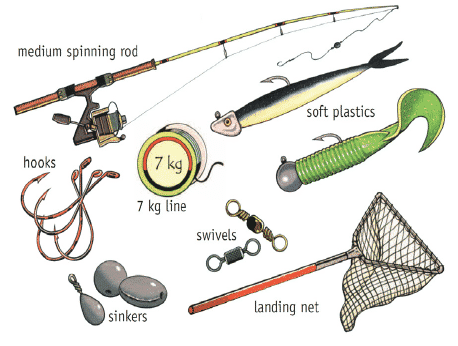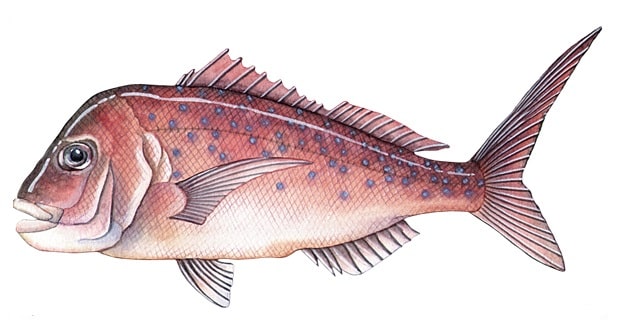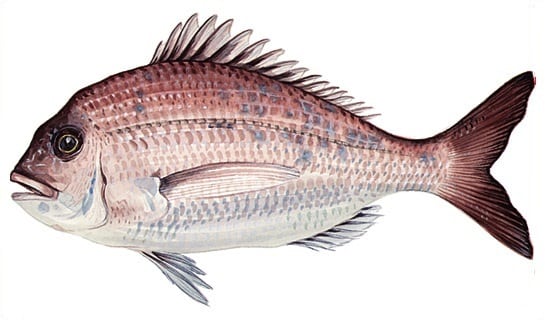Chrysophrys auratus
Description
Snapper are crimson in colour, with small, bright blue spots. The sides of the fish are silvery and the underside is a creamy white. The dorsal (and other) fins contain sharp, strong spines. Smaller fish up to 1.5 kg are called pinkies. Larger fish can develop a pronounced hump at the top of the head.
Distribution
Schools of medium to large snapper enter Port Phillip Bay around October to spawn and can be found in various locations from deep water over mud bottoms to inshore reef areas. From summer through to late autumn the smaller ‘pinkies’ can be found in shallower water, particularly near reefs and man-made structures. Pinkies also make their way into estuaries and can be found along coastal beaches and rocky shorelines.
Size
A fish over the minimum legal size may weigh around 350 g. Pinkies from this size up to one kilogram are commonly caught. Medium sized fish of 1-3 kg are also encountered in reasonable numbers. Larger fish can weigh in excess of 8-10 kg.
Fishing techniques and tackle
Pinkies can be caught on a variety of tackle depending on the size of the fish targeted and the location which is being fished. Pinkies can be caught on 3-4 kg line however large snapper will require 6-10 kg line. Running or paternoster rigs can be used and sinker weight will depend on desired casting distance or currents. Suicide hook patterns ranging from size 1/0 for pinkies, through to size 5/0 for large snapper are recommended. Best times would be early morning and evening although snapper can also be caught throughout the night. Medium-sized soft plastic lures in minnow or shad patterns are also very effective on snapper.


Baits
Pinkies can be caught on pilchards (cut into pieces), whitebait, strips of squid and pipis. Squid, octopus, silver whiting, garfish and fillets of other fish such as legal-size salmon and barracouta will catch larger fish.

Locations
Land-based opportunities to catch snapper are available from many of the piers, and other land-based locations in Port Phillip and Corio Bay. Many fish are caught from boats.
Sustainable fishing techniques
- Hook damage is the most significant cause of fish dying after being released. Deep-hooked (gills, gut) fish are far less likely to survive.
- Fish with a tight line so that fish are less likely to swallow the hook.
- Increase the size of your hooks to prevent small fish swallowing them.
- Avoid suspending fish on the hook.
- Fish hooked in the mouth or lip have the best chance of survival.
- Remove the hook with long nosed pliers.
- If you can’t see the whole hook protruding from the mouth of the fish don’t try and remove it.
- Cut the line and release the fish.
- Wet your hands before handling the fish.
- Avoid touching the gills and eyes.
- Return the fish as quickly as possible.
Related Resources
Fishes of Australia
http://fishesofaustralia.net.au/home/species/678
Redmap Australia
http://www.redmap.org.au/species/1/137




